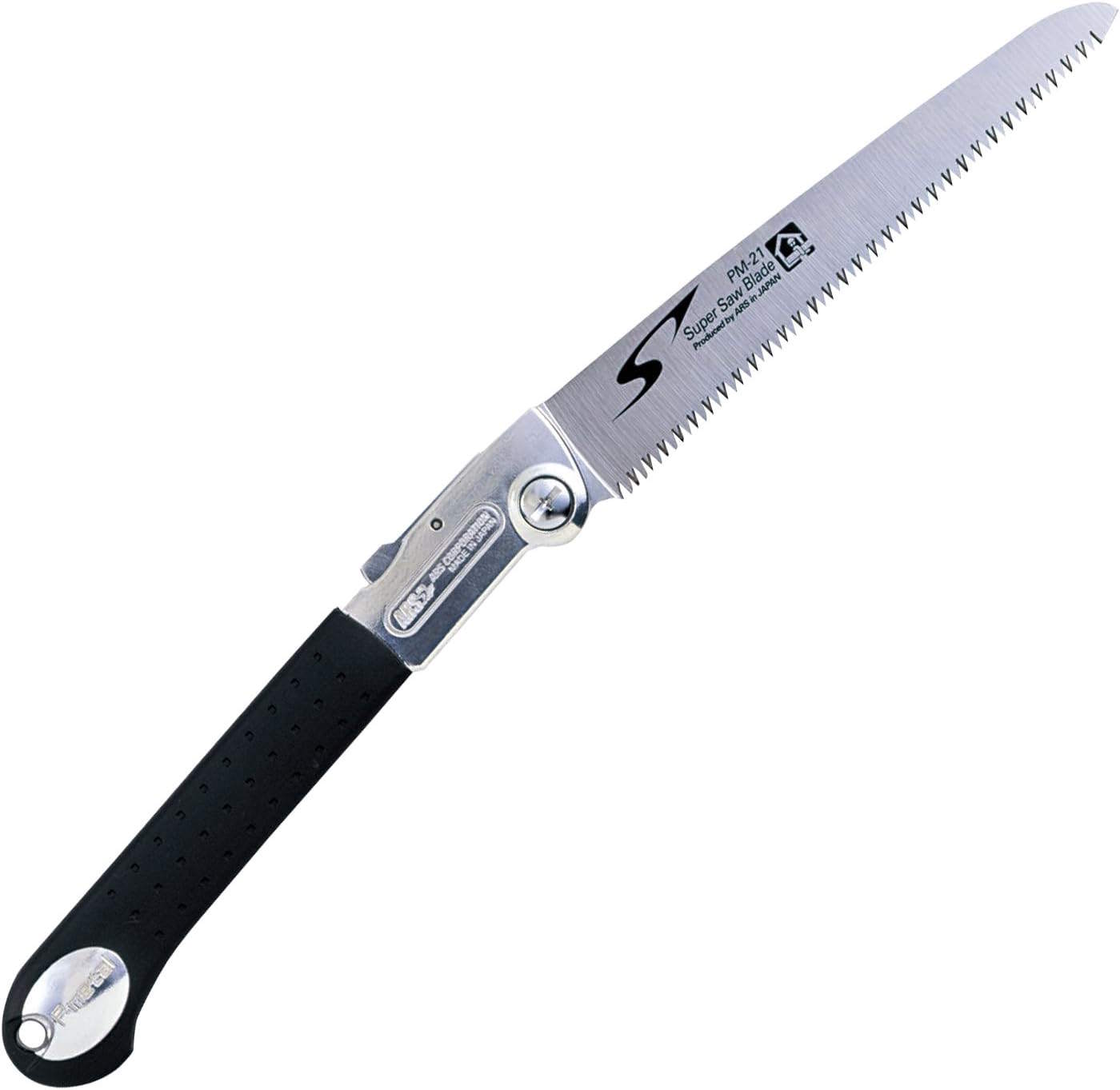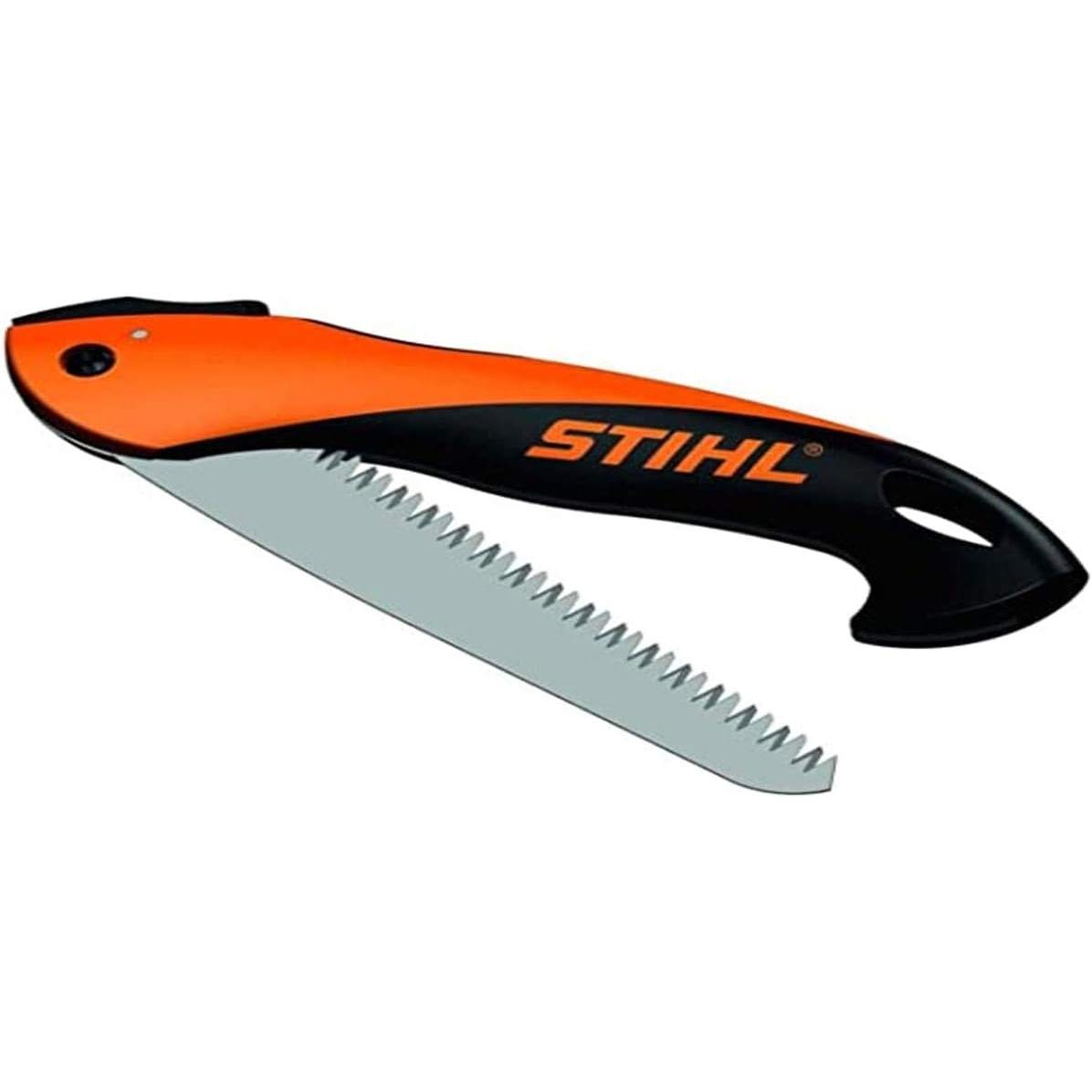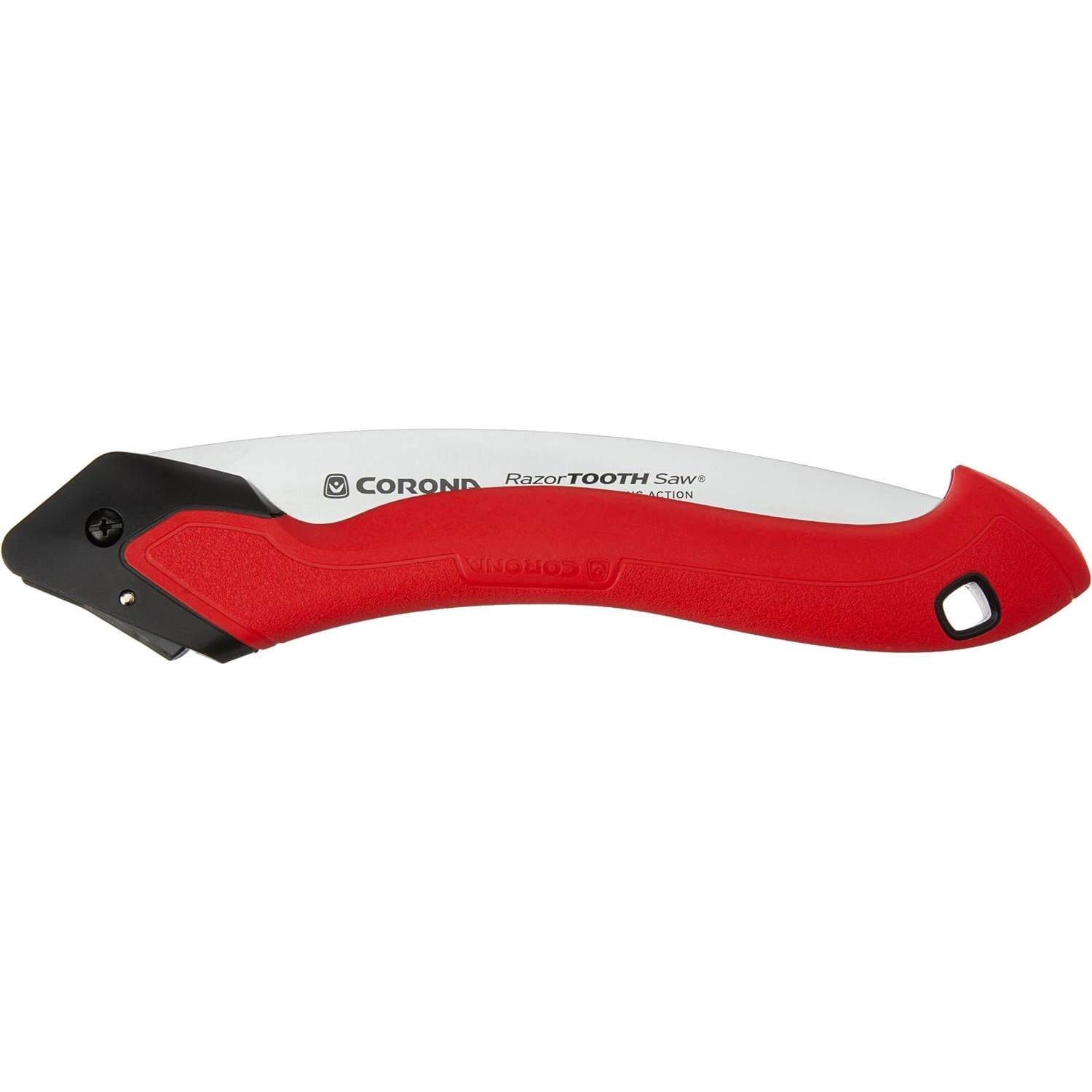How to prune tree branches – 5 tips to trim safely and correctly
Discover top advice for pruning tree branches, along with common pitfalls to avoid

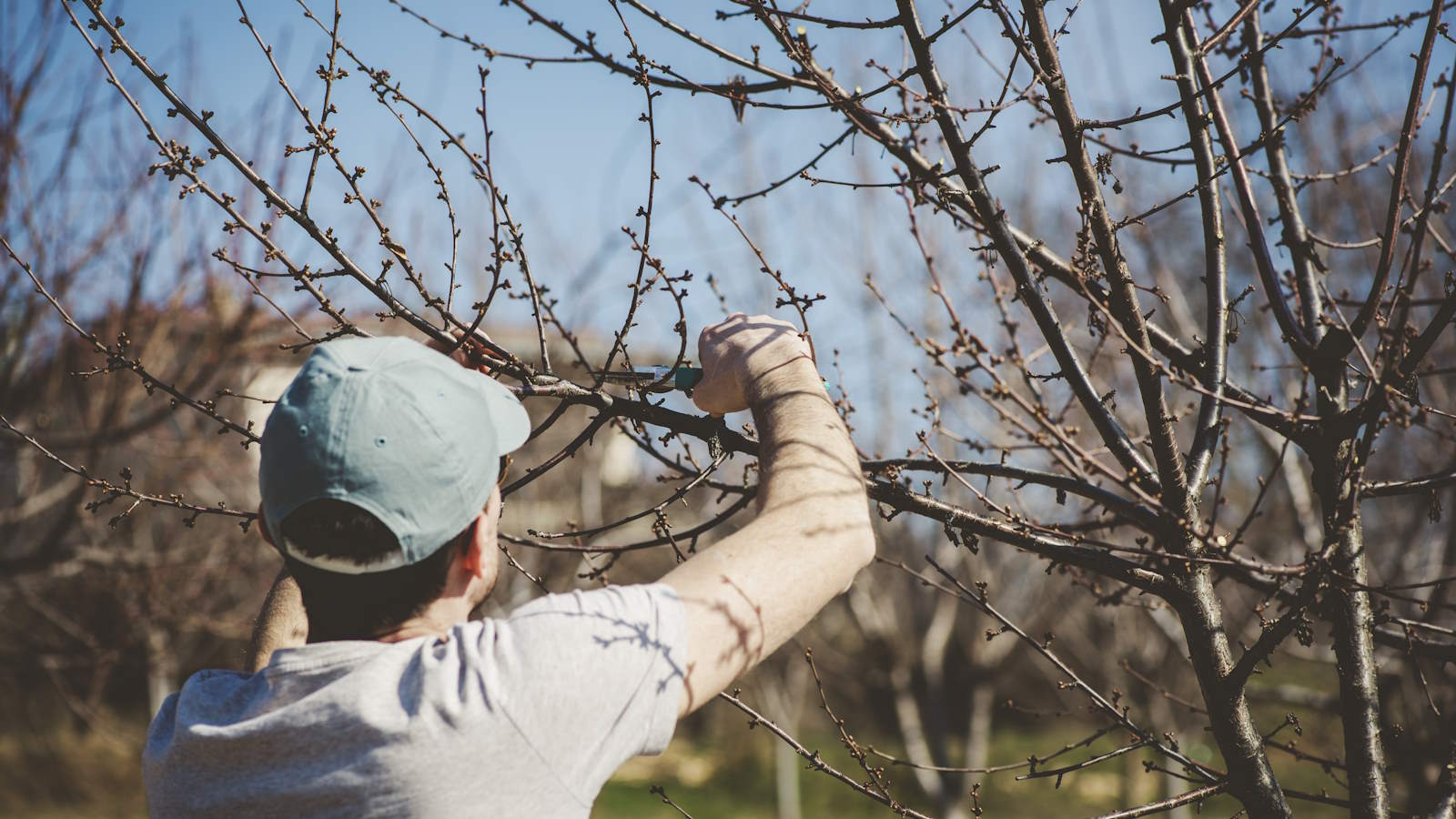
Pruning trees is a vital gardening task that preserves the health and charm of all trees, whether ornamental or being grown for their fruit. It is a very important task, but one that can come with a lot of risks attached.
Pruning tree branches is done for many different reasons. They can be removed because they are dead, damaged, and diseased, or they pruned pre-emptively as they are rubbing together and could be a cause for future issues.
You can remove branches from a tree’s crown if it is being raised, thinned, or reduced, in an effort to open it up and allow more light and air to circulate through the canopy. Whatever trimming you are doing, it is vital to know when to prune trees - to make sure you are cutting at the right time - and how to prune tree branches to ensure the safety of you and your tree.

Pruning tree branches may require a solid ladder
How to trim tree branches
There are some major dos and don’ts for when it comes to pruning trees, so we have rounded up some top tips from tree experts for how to cut branches correctly.
Knowing the right ways to cut branches, and when to seek further professional advice, can help give you the confidence you are caring for the trees in your backyard.
The ABC approach
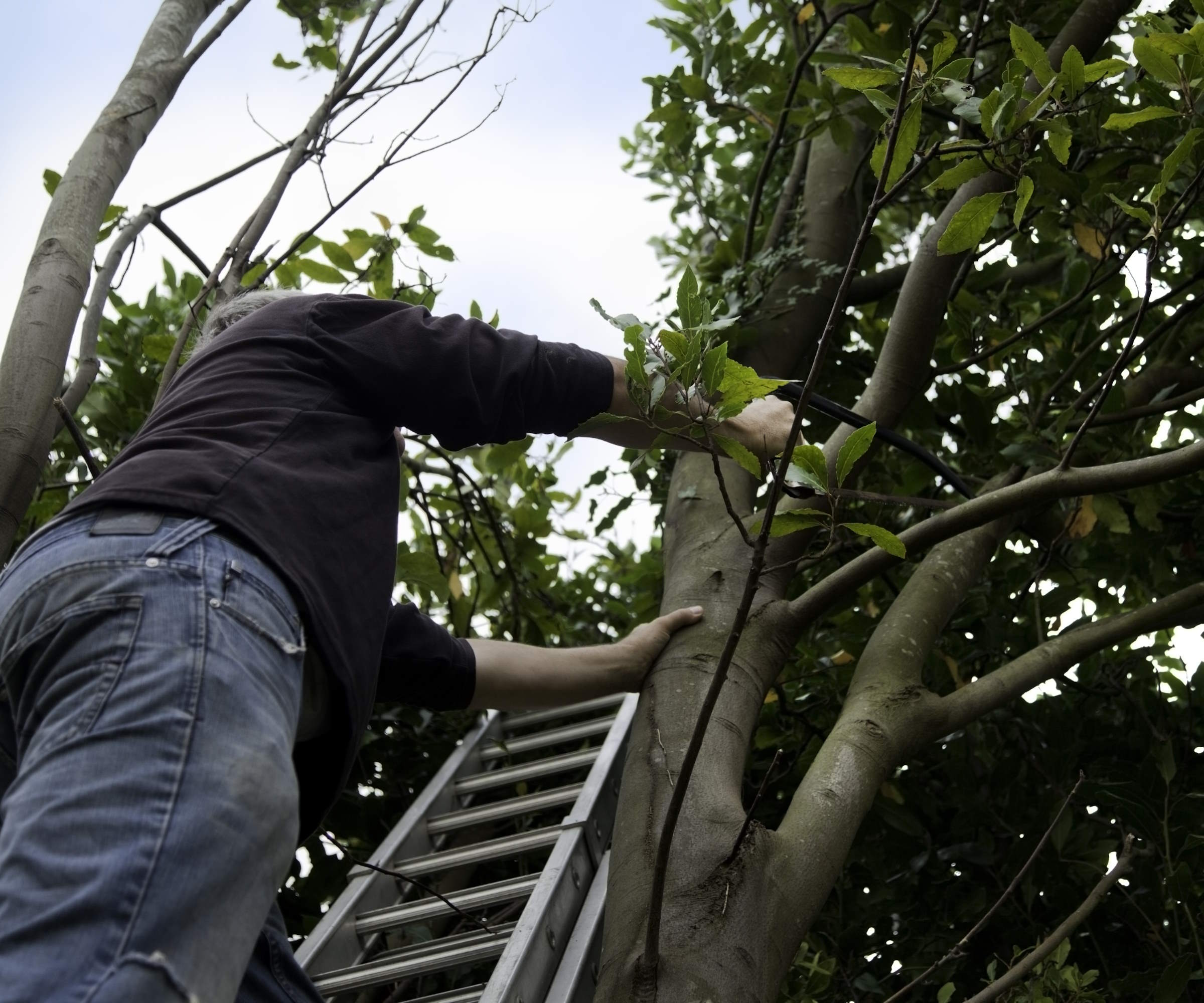
Only prune tree branches at heights you feel comfortable at
There are ways of how to cut tree branches that reduce the likelihood of tears or the splitting of bark on the tree trunk. Tearing and splitting the bark on the trunk is a common pruning mistake when cutting trees, and often it is caused by trying to remove too large a branch in one go.
Tamara Hogan, plant expert at Fast Growing Trees, explains a three-cut method, often referred to as either the ABC cut or 1-2-3 method, that is the best way to remove a larger branch from the tree.
Design expertise in your inbox – from inspiring decorating ideas and beautiful celebrity homes to practical gardening advice and shopping round-ups.
- Several inches above the joint of that branch to the trunk, make a small cut on the underside of the branch that goes about a third of the way into the trunk. This helps prevent peeling from happening as the branch breaks off.
- Now on the top of the branch, move a couple of inches further up the branch where you did the undercut. Cut your branch from the top to the bottom. This will naturally break off as the branch bends to the weight and will follow the first cut that we did.
- After the majority of the branch has been removed, go to the base of the branch. You will see a slight bulge where the branch meets the trunk. This is called the branch collar. We want to make a nice clean cut right before that collar so we don’t hit that tissue. It is very active and will help close over the wound.
A clean and sharp pruning saw, or folding saw, is always going to be the best tool for this technique. When you aim to saw a tree branch, always check which way it is going to fall and there are no obstructions between the branch and the floor that could cause it to fall erratically.

Tamara graduated from Utah State University with a degree in Ornamental Horticulture and an emphasis in Greenhouse Management. She worked within various horticulture fields before joining Fast Growing Trees.
Pick the right spot
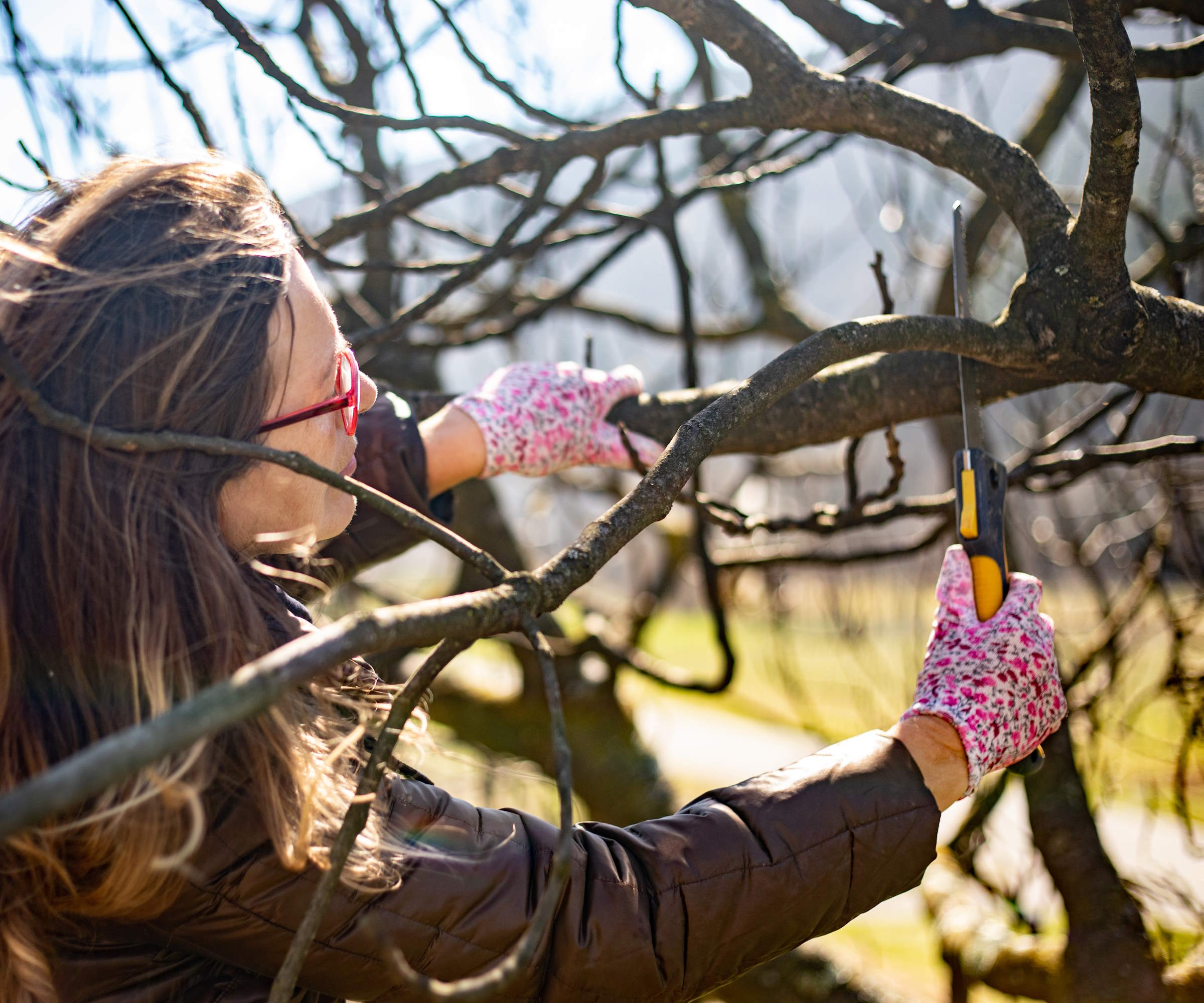
Avoid ripping the bark when pruning large tree branches
When pruning any tree, whether an ornamental or if you are pruning fruit trees, getting that cutting spot correct is crucial to maintaining the health of your trees. It might sound finicky to say that every cut needs to be spot-on, but as these cuts can encourage the new growth and be potential areas for die-back or disease, it makes it doubly important.
‘The proper location of the cut is essential. Inadequate pruning can lead to unhealthy plants, die-back, and a slow rate of wound healing,’ warns Nadezhda Yaneva, gardening specialist for Fantastic Services. ‘Pruning should not be done too far from the bud. This frequently affects the health of the bud by causing the wood between the cut and the bud below to die. Dieback can lead to the entire stem dying if the bud doesn't grow.’
Nadezhda also adds: ‘Avoid pruning too near the bud. This frequently causes harm to the bud itself, which makes it more unlikely that it will develop into a leaf or flower. A branch may also die back further down the stem if it is pruned too close to the bud.’
Aim to make cuts around a quarter of an inch from a bud that is facing outwards, as this will prompt the direction of any new growth. Make sure that the cutting blade side of the pruning shears or loppers always faces towards the bud or collar that you are cutting back to, so the other side flattens plant material that is being removed.
When you prune trees and remove whole branches, avoid cutting flush against the tree. You want to make cuts close to the branch collar, too far and you can leave stubs that are susceptible to dieback - which can go all the way into the trunk of the tree.
Chris Kemp, lead arborist at Piscataqua Landscaping & Tree Service, says a cut made too close to the main stem create ‘a vector for decay organisms’.
‘There is this imaginary line where the branch is attached to the main stem,' he explains. ‘This is called the branch bark collar - this is where the cut is made. But, the cut must not allow the bark to tear. A tear will not heal well and it will allow decay organisms into the plumbing of the tree.’

Chris has been involved in tree care for over 30 years. He is a Certified Arborist in New Hampshire, a Licensed Arborist in Maine, is certified by the International Society of Arboriculture, and has a Tree Risk Assessment Qualification.
Cut at an angle

Prune tree branches close to the branch collar
Once you have identified the right location of a cut, then you need to decide on the angle of the cut. Getting this angle right can help the tree to recover and heal the resulting wound to prevent water damage or potential disease.
Janet Melrose, a master gardener and creator of Calgary’s Cottage Gardener, says that it is recommended to make a cut ‘on a shallow slant’ away from a bud. This type of sloping cut - usually advised to be made at a 45-degree angle - helps prevent water from getting into the cut by directing it away from the surface.
She adds: 'The tricky part with taking that advice is that it might be tempting to make that slant too steep, which increases the surface area of the cut and opens the wound to potential disease problems. I would aim for a happy medium and make a nearly straight cut instead, with just a very slight slant.
‘The goal should be to reduce the surface area of the cut, which means that the tree doesn’t need to work so hard to compartmentalize a large wound.’
Understand your limitations

Pruning branches at an angle diverts water away from the wound
Trees can grow incredibly tall and fast growing trees can quickly get out of control if they are not regularly managed and pruned. If your property has very large and tall trees, or very old trees that need large-scale rejuvenation, then it is always recommended to get a professional in to do the pruning for you. It would be a big mistake to prune such trees yourself, and could have catastrophic consequences.
Lisa Tadewaldt, owner of Urban Forest Pro, says: ‘My advice for pruning large tree branches is don’t. There is rarely a need to prune large branches and if there is a need it should be done by a professional because if done incorrectly you will kill or permanently disfigure your tree.’
Trees should be pruned throughout their lifetime, starting from when you plant a tree as part of your backyard ideas. Regular and consistent pruning throughout the lifetime of a tree can reduce the need for large scale work down the line and keep the tree healthy and beautiful throughout its lifetime.

Lisa Tadewaldt is the founder and owner of Urban Forest Professionals, an arborist company out of Portland, OR, that has been serving that community for over 15 years
Think safety
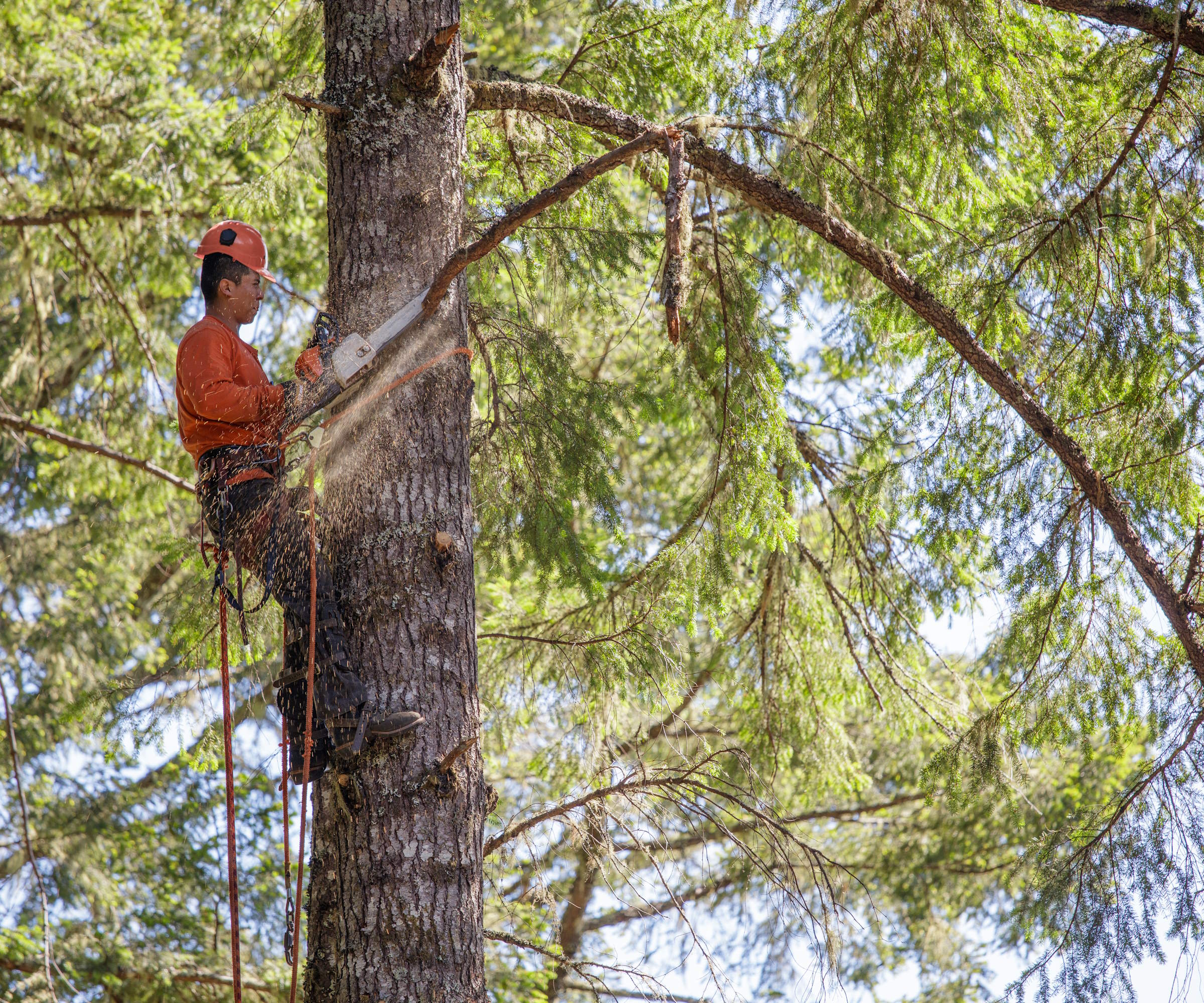
Professional arborists are required to remove tree branches at height
As well as not attempting to cut potentially dangerous branches, there are other dangers to consider when pruning trees. Every branch that you plan to remove should be done with care and diligence. This includes assessing why it should be removed, the best way to remove it, and how to prune it without causing damage to the tree, any surrounding structures, or yourself.
Fern Berg, the founder of Tree Vitalize, again points out that if the branch is 'very high or very large, or you are unsure how to proceed’ then it may be best to hire a tree surgeon. It is also important that any trees near power lines or large branches near homes or buildings are best left to professionals. Even when you are confident you can prune the branch, it is vital you have the garden tools required to do the task safely.
‘Make sure you are using the correct tools,’ says Fern. ‘Depending on the width and location of the branch, these might be large tree loppers, a pruning saw or in some cases a chainsaw. Make sure the tools are clean, sharp and in good working condition.’
Attempting to remove branches with dirty or rusty tools will make the job more difficult and create jagged cuts that are harder to heal. Trying to use the wrong tool for the wrong sized branch will also cause unnecessary damage to the tree.

Fern is the founder of Tree Vitalize and has planted and currently cares for over 100 different native and exotic fruit, nut, and ornamental trees.
FAQs
Is it OK to cut a branch off a tree?
Branches are important to the health of a tree, as they carry leaves to photosynthesize and feed the tree with required energy. But selectively pruning branches actively benefits the tree - helping it to grow healthily, vigorously, and in a desired shape. Removing any branches that are dead, diseased, or damaged is always beneficial to the tree’s long-term health. Trees will benefit from pruning that is planned and done with consideration at the right time.
Can you cut too many branches off a tree?
Over-pruning can be dangerous and it can stress a tree. Any pruning should be done considerately and you need to avoid getting too carried away. The one-third pruning rule says to not remove more than a third of any plant material in one go.
When pruning trees, you ideally do not want to prune more than a quarter out - but definitely not over a third. If a tree does require large-scale pruning work, then it is best done over a period of a few years. Some trees can be coppiced or pollarded and cut to ground level, but only a small number will respond positively to such treatment.
There are many tree mistakes that you may fall foul of throughout the lifetime of a tree. These can start all the way from planting a tree in the wrong place, or at the wrong time, in your yard.
Don’t let pruning be an area you neglect, as trees that get too congested are more likely to be unhealthy and pose more risks long-term. Good tree management and pruning as required will help you enjoy the beauty of a tree for many years to come.

Drew has worked as a writer since 2008 and was also a professional gardener for many years. As a trained horticulturist, he worked in prestigious historic gardens, including Hanbury Hall and the world-famous Hidcote Manor Garden. He also spent time as a specialist kitchen gardener at Soho Farmhouse and Netherby Hall, where he grew vegetables, fruit, herbs, and cut flowers for restaurants. Drew has written for numerous print and online publications and is an allotment holder and garden blogger. He is shortlisted for the Digital Gardening Writer of the Year at the 2025 Garden Media Guild Awards.
